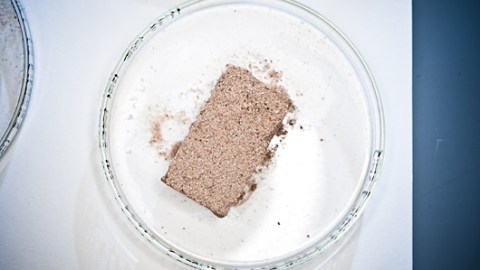Ecobricks: How Sand and Bacteria Could Save 800 Million Tons of CO2 Annually

1.3 trillion bricks are manufactured each year worldwide. 10% of them are made by hand in coal-fired ovens, emitting on average 1.4 pounds of carbon per brick or 800 million tons of carbon per year. In countries like China and India where the kilns are outdated this process is one of the major causes of air pollution.
Ginger Krieg Dosier, an American architecture professor, has found a way to make bricks without the need for baking but with the help of bacteria. Her “Biomanufactured Brick” won the 2010 Next Generaton Prize Challenge – “One Design Fix For The Future”. Dosier’s process doesn’t require heat at all, it mixes sand with non-pathogenic bacteria which induce calcite precipitation in the sand and produce bricks with sandstone-like properties. One wonderful thing about the process is that it can be done in any place without the need for electricity.

Literally, all you have to do is pour the bacteria solution over the sand and in about a week you have a hardened brick. In the words of the competition’s judges: “Here was a very simple concept defined by scientific method and an example of how you can come up with some very innovative ways to solve basic problems.”





